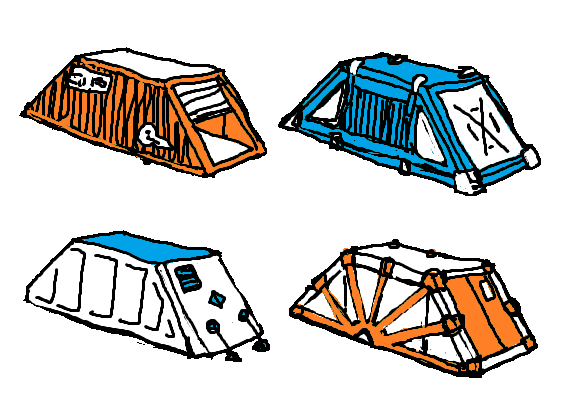Dragonfly carriers are the slowest form of transit currently in use in the System. This is because they generally take ballistic routes between planets rather than burning more fuel for direct approaches, like courier or liner transports do. Transit times are typically in the range of months to a year, compared to liners which range from weeks to months. As a consequence, Dragonfly carriers are not suitable for perishable goods.
Most agree that the greatest challenge for any Dragonfly is in the 'last mile' of entering port. So far, most cargo ship operators have solved this problem by sidestepping it: Dragonflies are maneuvered to a healthy distance from stations, and containers are unloaded by a small fleet of shuttles. Destinations where this is not possible are either avoided, or necessitate the use of tugs, as Dragonflies are incredibly unmaneuverable thanks to their extreme mass compared to their propulsion.
Others say the more important challenge is the extended isolation required by a typical cargo route. The isolation tends to take a toll on the mental health of pilots, as well as carrying a risk of
Deep Space Syndrome. Most modern Dragonflies are unmanned and operated by computers and
Synthetic Intelligence. Although automation is not without its own costs, the benefit of not requiring a life support system is considerable.









I like the description, though I think I have a general liking for vehicles that resemble animals and such. I also think it's neat that they are so specialized that they aren't very useful beyond their single purpose. They can traverse the vast distances of space on the cheap, but they'd be useless for short distances. I did get a little confused on the bit about the benefits of being unmanned. I understood that the ships were automated, but I didn't understand right away the context of the sentence about Deep Space Syndrome, as this shouldn't apply to an unmanned Dragonfly Carrier. But I think you're comparing the drawback that other (piloted) types of transport have? This confusion might clear up if you replaced "additionally" with "for example," but I'm not sure, so you might want to get some more reads and find out if anyone else was confused. (Maybe it's just me :D )
Thank you! I also like the idea of hyperspecialized vehicles in sci-fi settings. They're already quite fascinating in the real world, and it's fun to think about analogues in a different one. I think you're right that the paragraph is not written the best it could be. Alas, I cannot edit it until after the editing embargo is lifted.
lol I'm running into the same problem my own self, on the editing front.